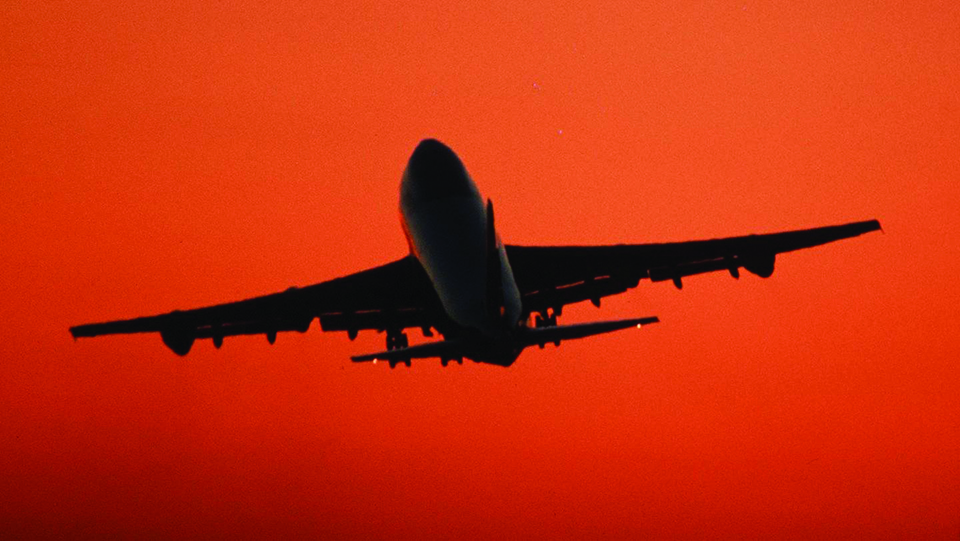
OR

More from Author
Global aviation accounts for about 2.5 percent of overall carbon emissions and 11 percent of all emissions from transportations
Aviation, or air transport, alludes to the design, production, maintenance and operation of aircraft. Simply, it can be defined as the art or science of flying airplanes. Aviation technology came into existence with the controlled gliding flying of ‘Otto Lilienthal’ in 1896 and with the construction of the first powered airplane by the Wright brothers in the early 1900s. Thereafter, with the introduction of jets, aviation was considered a major form of transport throughout the world. They are the easiest and convenient way of transportation and they use petroleum-based fuels for their operation.
Along with considerable amenities of aviation, they do have various downsides too. Transportation sector is considered as the second largest source of anthropogenic green-house gas emissions. This sector is very energy intensive and uses petroleum-based fuels such as gasoline, diesel, kerosene etc almost exclusively to meet those needs. Global aviation accounts for about 2.5 percent of overall carbon emissions and 11 percent of all emissions from transportations of which international flights create about 62 percent of these emissions and domestic flights create remaining 38 percent. Over the last 10 years, aviation has become one of the swiftly growing sources of carbon emissions.
Annually, aviation accounts for one to two percent of total greenhouse gas emissions. It is also the most carbon-intensive form of transportation. Thus its growth comes with a heavy impact on climate change and global dimming. If not solved timely, the global greenhouse emissions of aviation could rise up to 22 percent by 2050, according to a 2017 research.
Aircraft brings antagonistic impact on environment as aircraft engines emit heat, noise, particulates, and gases which also contribute to global dimming and climate change. The typical airliner exhaust consists of gases like carbon-dioxide, water vapor, hydrocarbons and aerosol particles, carbon-monoxide, nitrogen oxides, sulfur oxides, lead, black carbon and several other organic and inorganic compounds which have a very harsh impact on mankind. It also causes severe effects on natural resources including wetlands, floodplains, flora, and fauna. Moreover, even airports can have severe impacts on biodiversity, including loss or degradation of habitats.
There is no other human activity that pushes individual emissions level as quick and high as air travels, yet so many of us are completely unaware about it. Aviation can become huge threat to human health as it is growing vigorously with the growth rate of nearly five percent per year. There were already more than 79 million aircraft movements in 159 countries.
Though aviation was given special consideration by International Civil Aviation Organization (ICAO), it has also proposed a market-based mechanism called Carbon Offsetting and Reduction Scheme for International Aviation (CORSIA). Under CORSIA, countries’ airlines are given allowances to emit carbon, and if they exceed their allowances then they must buy offsets from other sectors. Yet the plan has not been fairly implemented and it does nothing to stifle demand.
It’s time to act against the devastating impact flying has on the environment. No any solutions are going to work out unless the citizens become aware of the hazards of aviation’s emissions. People who fly frequently must reduce flying by using alternatives when feasible. Smart technologies must be implemented. Mainstreaming the government policies is as much necessary.
The author is a student at Institute of Forestry, Pokhara
shreyashibista11@gmail.com
You May Like This

MCC, Indo-PacificStrategy and Nepal-US Relations
Now, Nepal's diplomatic capability should be proven to convince the USA to review some controversial provisions in the MCC and... Read More...

Crime against Humanity
Instead of making genuine efforts toward vaccine procurement, the PM urged the public to gargle with guava leaves and drink... Read More...







Just In
- NRB to provide collateral-free loans to foreign employment seekers
- NEB to publish Grade 12 results next week
- Body handover begins; Relatives remain dissatisfied with insurance, compensation amount
- NC defers its plan to join Koshi govt
- NRB to review microfinance loan interest rate
- 134 dead in floods and landslides since onset of monsoon this year
- Mahakali Irrigation Project sees only 22 percent physical progress in 18 years
- Singapore now holds world's most powerful passport; Nepal stays at 98th












Leave A Comment